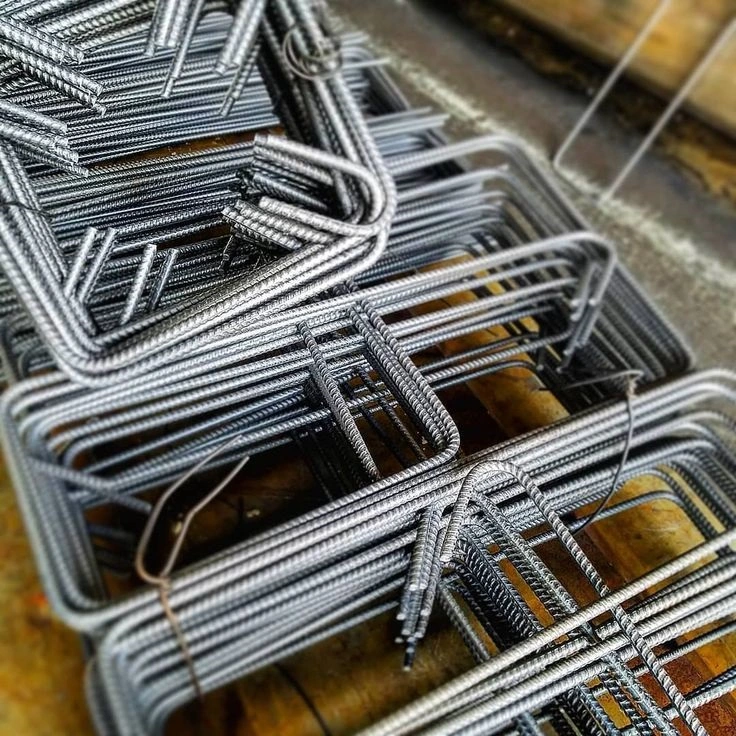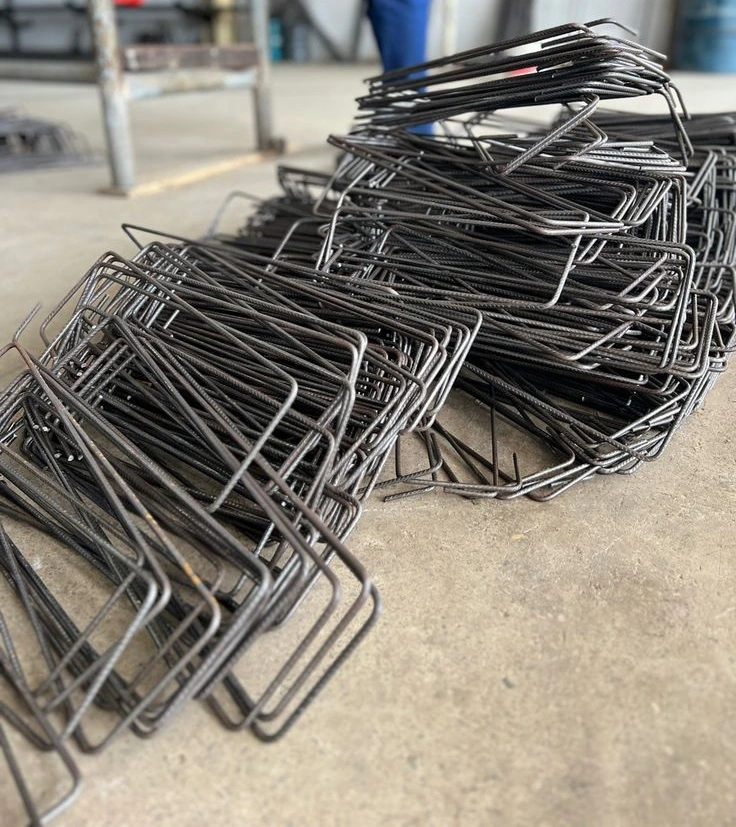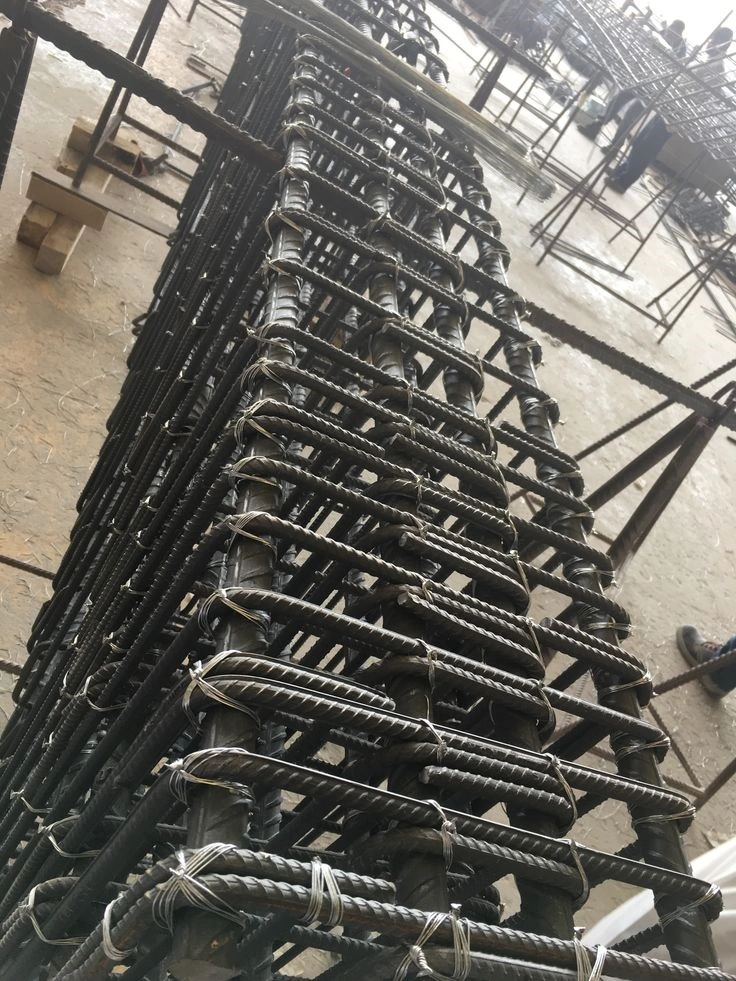Stirrups are critical components in reinforced concrete, especially in beams and columns. They hold the main reinforcement bars in place and protect the structure from shear forces, which are common in high-stress areas. As a result, they increase the strength, safety, and durability of concrete elements.
Typically, stirrups are made from mild steel (MS), high-strength deformed bars (HSD), or thermo-mechanically treated bars (TMT). Depending on the design, they are bent into square, rectangular, circular, or custom shapes.

Stirrups perform multiple essential functions in reinforced concrete. Here’s how they contribute to structural integrity:
First, they resist shear forces that could cause diagonal cracking.
Second, they prevent the main vertical bars from buckling under compressive loads.
Third, they keep the reinforcement bars correctly aligned during concrete pouring.
Lastly, they help the concrete member withstand heavy loads over time.
Without proper stirrup placement, a concrete structure becomes more prone to shear failure, which can lead to cracks or even collapse.
While concrete is naturally strong in compression, it lacks strength under tension and shear. Stirrups help overcome this weakness. Here’s what they do:
Resist Shear Forces: They prevent diagonal shear cracks in beams and columns.
Prevent Buckling: Stirrups hold the longitudinal bars steady during compression.
Maintain Alignment: They ensure that the rebar stays in place while pouring concrete.
Enhance Strength: By supporting the entire reinforcement system, they improve structural stability.
Concrete is strong in compression but weak in tension and shear. Stirrups help address this weakness by:
They prevent shear failure in concrete structures.
They reduce diagonal cracking, enhancing safety.
They stop vertical bars from buckling under load.
They hold rebar securely in place during the construction process.
They increase the load-bearing capacity, which is especially useful for high-rise and heavy-duty structures.
Although stirrups are highly effective, there are a few drawbacks to consider:
Higher Material Costs: Stainless steel stirrups are more expensive than standard steel.
Labor-Intensive Installation: Bending and tying stirrups requires skilled workers.
Time-Consuming Process: Building and installing stirrup cages takes time, especially in large-scale projects.

A reinforcement ligature is a type of closed-loop steel tie used in concrete construction. Much like stirrups, ligatures secure the main reinforcement bars and resist shear forces. However, they are most commonly used in vertical columns, where stability and load distribution are critical.
Although often used interchangeably with stirrups, the term “ligature” is more prevalent in certain regions and structural applications.
Ligatures play several roles that contribute to structural safety and longevity:
Prevent Shear Failure: They stop cracks caused by lateral stress.
Constrain Concrete Core: They confine the inner concrete, especially in columns, to improve strength.
Prevent Bar Buckling: Ligatures keep vertical reinforcement bars from bending under heavy loads.
Hold Reinforcement in Place: They maintain the correct shape and position of the cage during concrete placement.
Improve Earthquake Resistance: In seismic zones, ligatures add flexibility and help dissipate energy during tremors.
Steel ligatures are essential in several key structural elements:
Reinforced Concrete Columns: They offer lateral support to the main vertical reinforcement.
Beams: In some areas, the term “ligature” replaces “stirrup,” but the function remains the same.
Piers and Foundations: Ligatures keep vertical bars aligned and prevent buckling.
Seismic Structures: In earthquake-prone regions, ligatures provide added ductility and energy absorption.
Stirrups and ligatures are not just minor components—they are vital to the safety and success of any reinforced concrete structure. Understanding their purpose and correct application helps ensure strong, long-lasting, and code-compliant construction.
If you’re working on a project that demands reliable reinforcement, be sure to choose the right materials—and consider working with professionals who understand their importance from design to installation.
